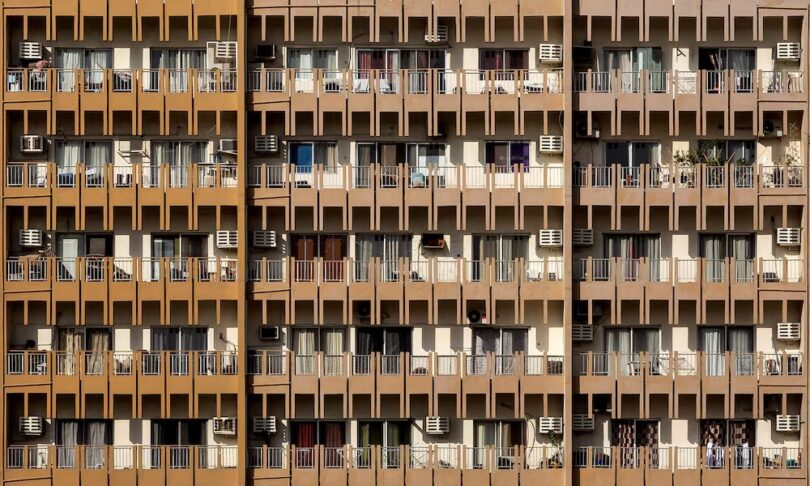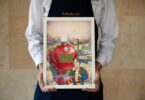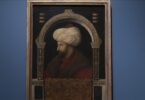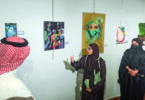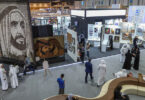Ahmed S. Almansoori
The UAE has undergone a startling transformation over the past five decades. However, for Emirati photographer Hussain AlMoosawi, there is no better way to trace his country’s journey than by documenting its architecture.
For 20 years, AlMoosawi has taken thousands of photos of buildings across the Emirates, from traditional homes to bleeding-edge high rises. While each tells a story of their own, it’s in putting them together that it truly becomes fascinating for him, and when his own perspective on that evolution starts to emerge.
“Once you really become interested in the subject matter, the camera becomes just a tool. I know what I want from this medium,” AlMoosawi tells The National. “And once you have that clarity, by default you’ll end up producing something different. The work itself shows that you have a message. It could be anything really. In my case, it’s about the build space, environment and everything urban.”

These days, AlMoosawi primarily focuses on building facades. He hopes to capture enough of them to reach a final statement on the design principles and styles of UAE architecture. The project, to him, is not only about art, but is also a cultural research endeavour – one he plans to develop into something he can share with the world.
“The idea is to have all these pictures as part of an interactive archive where researchers can go and use it how they see fit,” he adds. “The way they want to use the data is up to them. Perhaps architects can use it to study and inspire their own work.
“The plan is to have them all organised, so once the project is completed, I’m not only creating the pictures, I’m also adding the information that goes with them.”
All this started a long time ago for AlMoosawi. He studied applied media at theHigher Colleges of Technology. There, he learnt plenty about the technology. Though he later realised he knew little of the theory to go with it. If the camera was a tool, he still needed a guiding principle to utilise it properly.

In 2004, AlMoosawi ventured to Australia, first to Brisbane and then to Melbourne to study design. That experience helped his understanding of art theory and history “mature”, he explains. After completing his studies, there was still one more element missing.
“The third component was the place,” he says. “There needs to be a place that exists for us to document. So I brought my understanding of design and thought and applied it to Melbourne. That place made me curious about the nature of the urban space because the city is very vibrant. It’s very colourful and I wanted to understand the many invisible elements of design.”
When he returned to the UAE, he categorised the different elements of the urban landscape in a similar fashion. He broke the country’s architecture into different series; some explored the construction barriers, others doors and finally a series on building facades. This, AlMoosawi explains, is called typology – the systematic categorisation of the different types of one thing based on common characteristics.

“Our architecture is quite heterogeneous. It’s not like when you go to Muscat, where everything is the same,” he adds. “In Muscat, there is no puzzle to understand. Everything is more or less designed to fit within a certain style or theme.
“When you go to London, the setting is complex because there’s Victorian and Edwardian architecture. It’s all categorised. They have Roman designs remaining. It’s all out there, and has been labelled.”
Architects who shaped the UAE’s landscape hailed from the Indian subcontinent, the Arab world and the West, AlMoosawi says, intertwined with the local heritage. Now he believes things have become more chaotic, with different styles and designs intermingling. This has only piqued his interest further.
What conclusions AlMoosawi will come to, once he’s completed his project, remains to be seen. But when he’s done, he’s sure he will understand the country that raised him like never before.
Courtesy: thenationalnews

